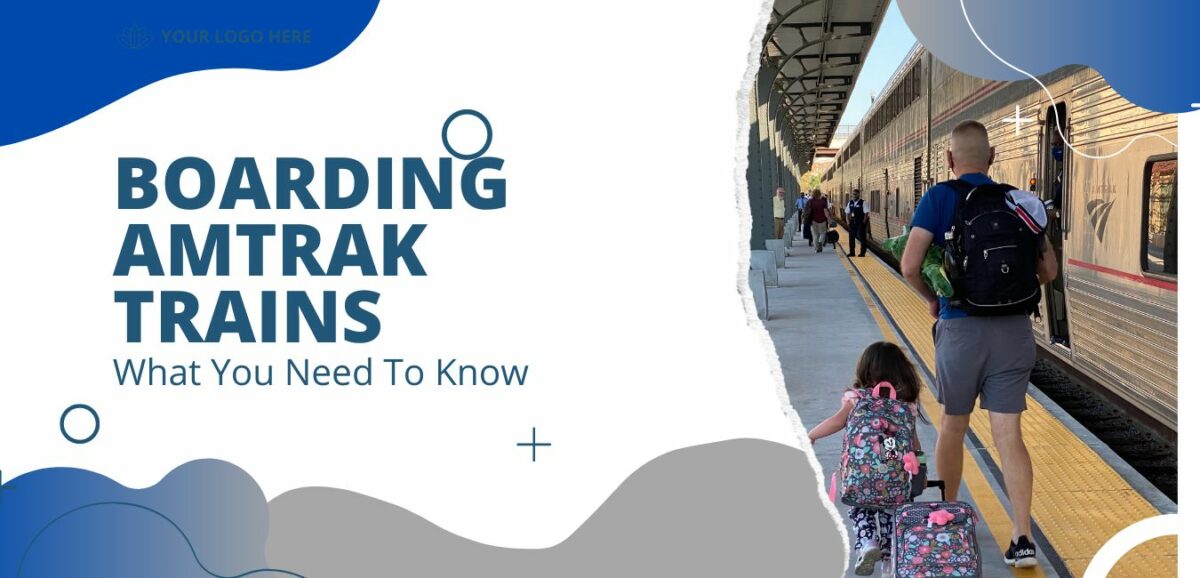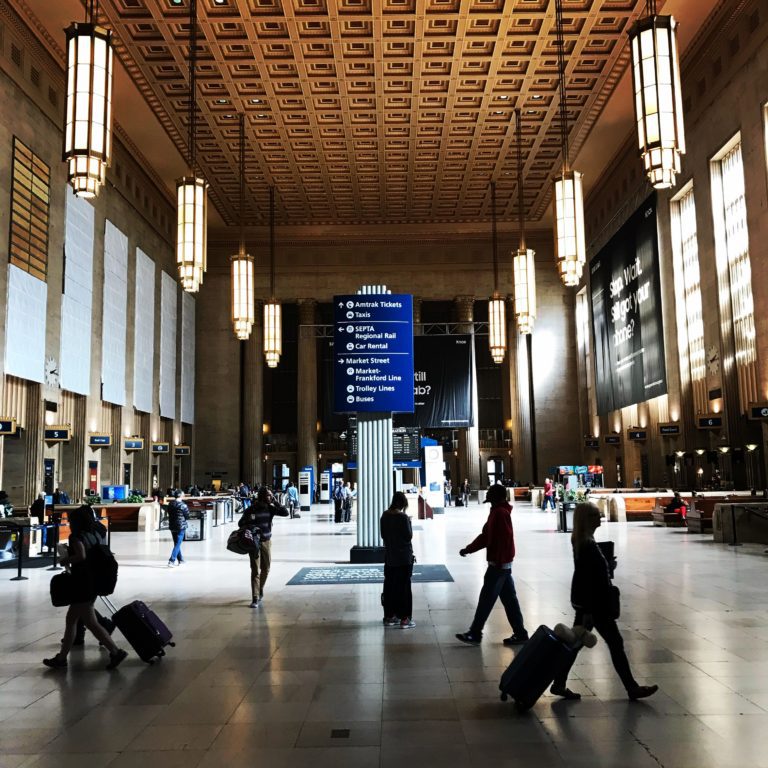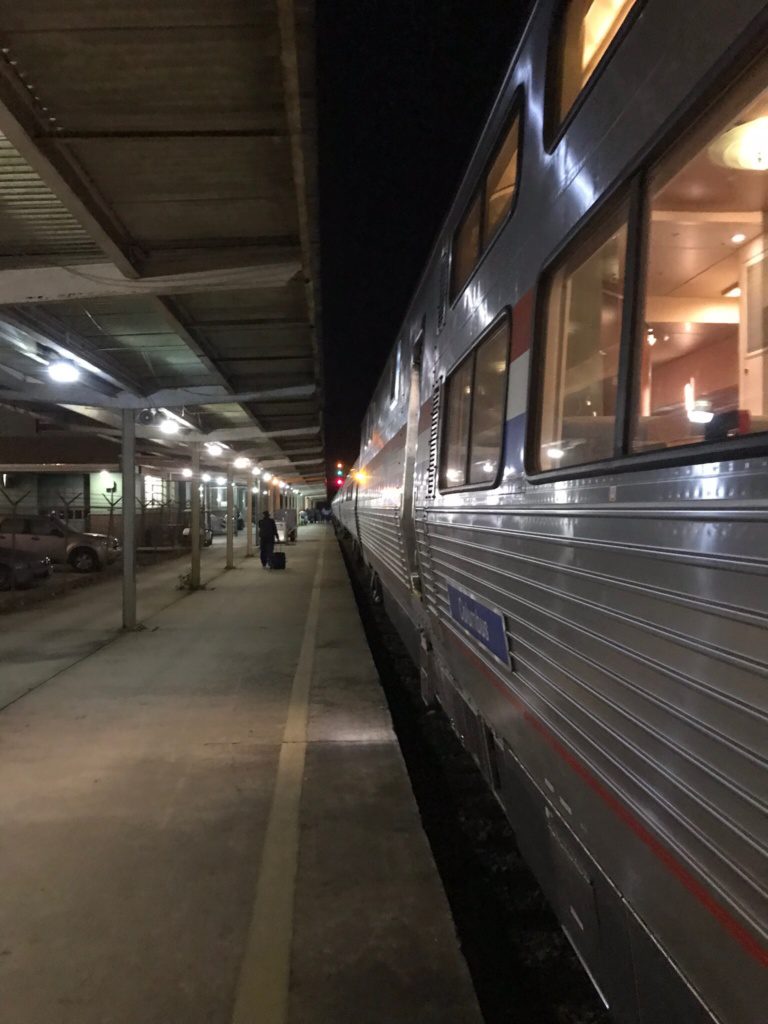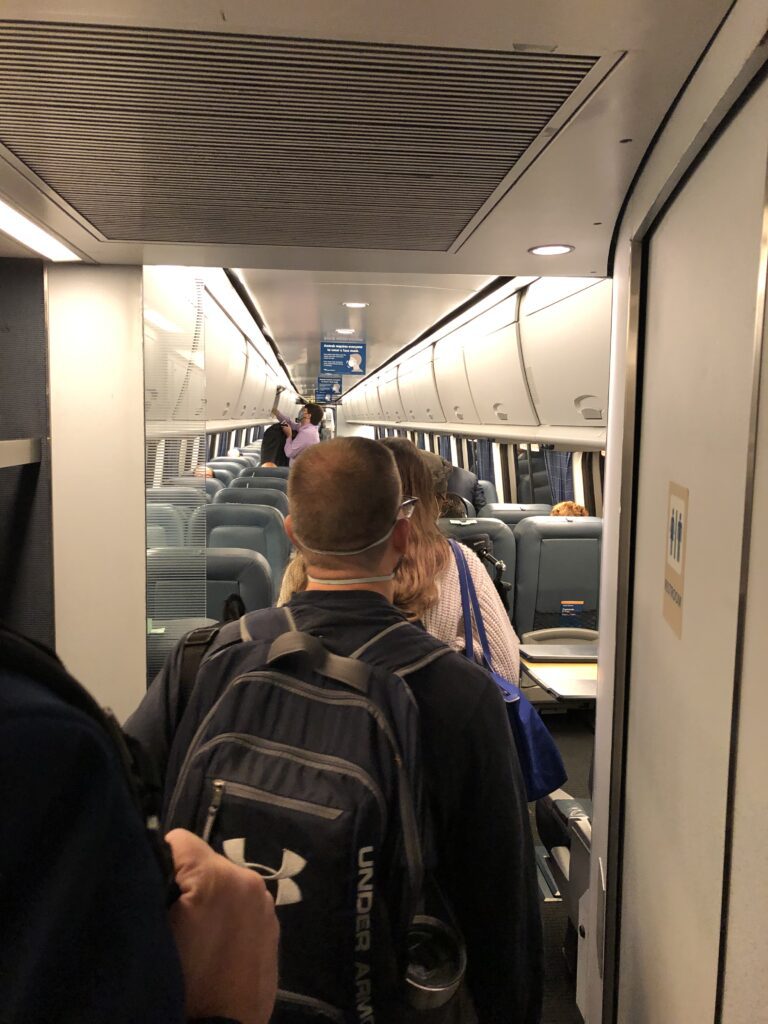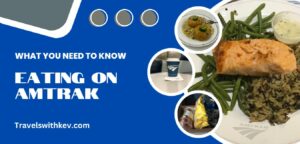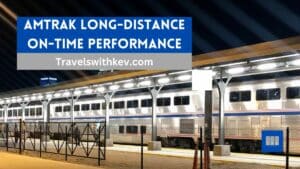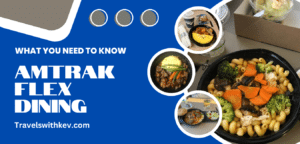If you’re reading this, you’re probably preparing for an Amtrak adventure, and I’m here to guide you through the Amtrak boarding process. Boarding an Amtrak train may seem daunting for your first trip, but with these tips, you can quickly become a pro.
Amtrak stations vary in size and style, from staffed hubs to unstaffed platforms and even mysterious flag stops. Your experience may differ from one station to another. This article shares my tips and tricks from years of Amtrak travel experience.
So grab a snack, get comfortable, and start your journey on the right track. I’m excited to have you along for the ride!
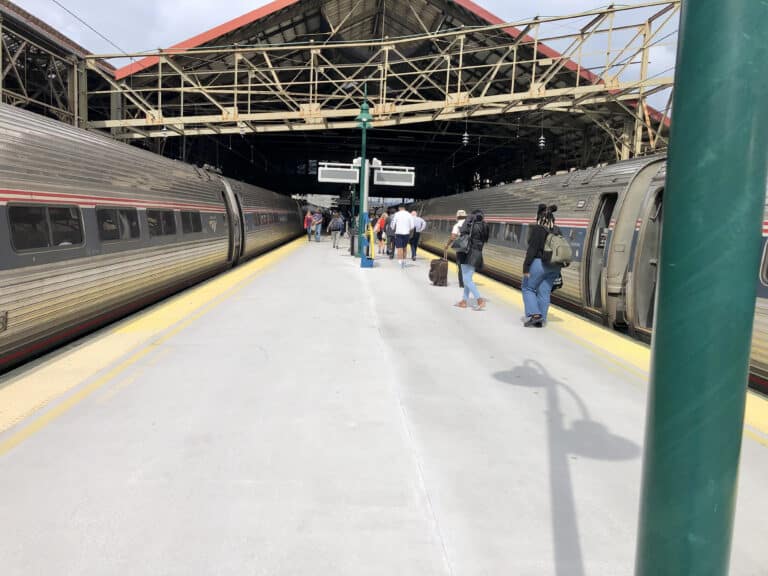
Preparing to Board an Amtrak Train Starts at Home
Taking a few steps before heading to the station can make your trip smoother and less stressful.
Buy Your Tickets in Advance
Purchasing your tickets in advance can save you money and guarantee a seat. While last-minute purchases are possible, they often come with higher prices and the risk of trains selling out. You can buy tickets online, through the Amtrak app, by calling Amtrak, or at staffed stations. Additionally, some travel agents can assist you if needed.
Many stations have Amtrak Quik-Trak machines where you can purchase or print tickets. If your departure station is unstaffed, please have your ticket ready upon arrival.
Most Amtrak trains do not allow onboard ticket purchases. If allowed, onboard ticket purchases are cash only and typically cost more. You may have to disembark at the next stop if the train is fully booked.

Need Special Accommodations?
If you require accessibility accommodations or assistance with boarding, please notify Amtrak when making your booking. If traveling with a service or comfort animal, ensure it complies with Amtrak’s policies.
There will be a checkbox to select, followed by a series of questions to help Amtrak understand how to assist you.
Verify Your Travel Details
Before your trip, log in to your Amtrak account or app to confirm your ticket details, including departure time and assigned accommodations. You should also check Amtrak’s Service and Station Alert page if you miss any emails or calls.
Check if there is a direct train route or if you need to transfer. If a transfer is necessary, exploring the area around the station for food, recreation, or other activities you’d like to do may be beneficial. Often, you can do that by entering the station using an app like Google Maps.
Additionally, verify how much time you have before your next train departs. If the layover is short or there are limited food options nearby, ensure you have a plan in place. No one wants to deal with a grumpy, hungry traveler!
Additionally, please note if your trip includes Amtrak connecting services. Please check your tickets carefully, as they may consist of non-train transportation options. Many travelers are surprised to discover that their itinerary includes trains, buses, or other forms of alternative transportation. Being prepared can save you a lot of hassle! When booking, Amtrak indicates whether your service includes mixed transportation during the booking process.
Last-minute changes, such as adjustments to departure times or room assignments, may occur. If your barcode is missing from the app, contact Amtrak immediately.

Check Your Train’s Status Before Leaving
To stay updated on any delays before heading to the station, use the Amtrak app, visit the website, or call them directly. Amtrak provides a delay alert service that sends notifications via text or email. Anyone, including people picking you up, can sign up for these alerts. If you sign up for alerts during booking, you won’t need to do it again.
I have a post that can help you track trains if needed.
Research Your Stations
Amtrak stations vary widely. Small-town stations may be unstaffed and range from a small building to a simple platform with a bench. Larger stations often have staff, lounges, and additional amenities.
Before your trip, consider these questions:
- What services are available at your departure and arrival stations?
- Is long-term parking available?
- Is there an indoor waiting area?
- Can you check your baggage?
- Are restrooms available?
If possible, visit your departure station in advance to familiarize yourself with the layout. If it’s a staffed station, you can purchase your ticket there and ask questions.
A Personal Lesson: Know Your Station
On my first Amtrak trip, I learned this lesson the hard way! I confidently drove to where I thought Sturtevant Station was—only to find out it had moved! Luckily, I had enough time to turn on the GPS, find the correct station, and catch my train. Conducting a little research in advance can help prevent unnecessary stress on travel day.
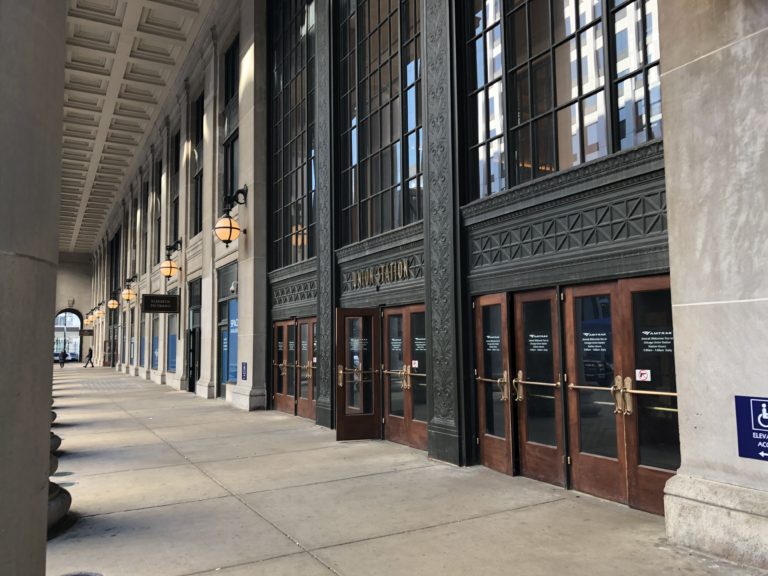
Do I need to check in for my Amtrak trip?
You do not need to check in 24 hours before with Amtrak, like when you fly.
You may only need to check in if you use a lounge (more on that later) or if you need to verify your station check to ensure you are at the correct location for your journey.
Does Amtrak Have TSA Security?
Amtrak does not have TSA security checkpoints like airports, so you don’t need to worry about adding your Known Traveler Number to your Amtrak tickets.
You won’t need to go through body scanners or remove your shoes. However, Amtrak does implement its security measures, which include random baggage screenings, K9 units, and onboard police officers.
What You Need to Know About Security on Amtrak:
- ID Checks: Amtrak may require passengers to present a valid government-issued ID when purchasing tickets, checking baggage, or upon request by crew members. A government-issued ID, such as a license or passport, is acceptable.
- Baggage Screening: Although Amtrak does not screen every bag as the TSA does, random baggage checks may occur at stations.
- Prohibited Items: Amtrak maintains a list of banned items, including firearms (unless properly declared), certain hazardous materials, and oversized luggage. It’s always best to check Amtrak’s official baggage policy before traveling.
- K9 Units: Some larger stations have security dogs that check for prohibited substances.
- Onboard Officers: Amtrak Police may be present at stations and onboard, ensuring passenger safety.
Unlike air travel, you can bring your drinks (including sealed alcohol in some cases), liquids, and snacks without restrictions.
Do You Need to Arrive Early, Like at an Airport?
You don’t need to arrive hours in advance for most Amtrak trips. However, getting to the station at least 30-45 minutes before departure is a good rule of thumb, especially at major stations. If you’re checking baggage, allow extra time —typically at least 45 minutes to an hour —before departure.
Some stations have lounges, allowing early arrivals to relax and unwind.

Check the train’s status before leaving.
Before leaving for the station, check the status of your train using the Amtrak app, call Amtrak, or visit a few third-party sites. For more information, please see my article on tracking Amtrak Trains.
Amtrak offers a delay alert service that sends texts or emails to notify you if the train is running late. You can sign up for this when you purchase your tickets or at a later time. You do not need a reservation to use this service, so people picking you up can also sign up.
Getting your luggage ready for boarding an Amtrak train
Whether you carry on or check, all bags must have a tag with your name, phone number, email address, or both.
Carry-on
Each passenger may carry on:
- One personal item, up to 25 pounds (12 kg), and 14 x 11 x 7 inches
- Two carry-on pieces of luggage, 50 lbs. (23 kg) and 28 x 22 x 14 inches each
If you transfer to the Pacific Surfliner at some point along your journey, the baggage size limit for that train is 28 x 22 x 11 inches per piece.
Charges apply for additional and oversized luggage; check out Amtrak’s carry-on bag policy for more information.
Checked Bags
You can check bags on many Amtrak trains if your beginning and ending stations have checked bag service. The app and train indicate if you can check bags on your journey.
Stations With Self-Service Checked Baggage
Self-serve trainside checked baggage service is available to and from the following stations only: Charleston, WV; Cincinnati, OH; Columbus, WI; Crawfordsville, IN; Dyer, IN; Hammond, LA; Lafayette, IN; Meridian, MS; Mount Pleasant, IA; Rensselaer, IN; Texarkana, AR; Tuscaloosa, AL; Winona, MN.
Checking your bags mid-route
I have an advanced Amtrak check-bag travel tip: You can check bags mid-route.
For example, if you travel from Sturtevant, WI, to DC, you must carry your bags onto the Hiawatha. However, when you arrive in Chicago, you can check your bags there and retrieve them upon arrival in DC.
However, be aware that in most cases, you need to do this 45 minutes before your train’s departure.
Boarding an Amtrak train at an unstaffed station
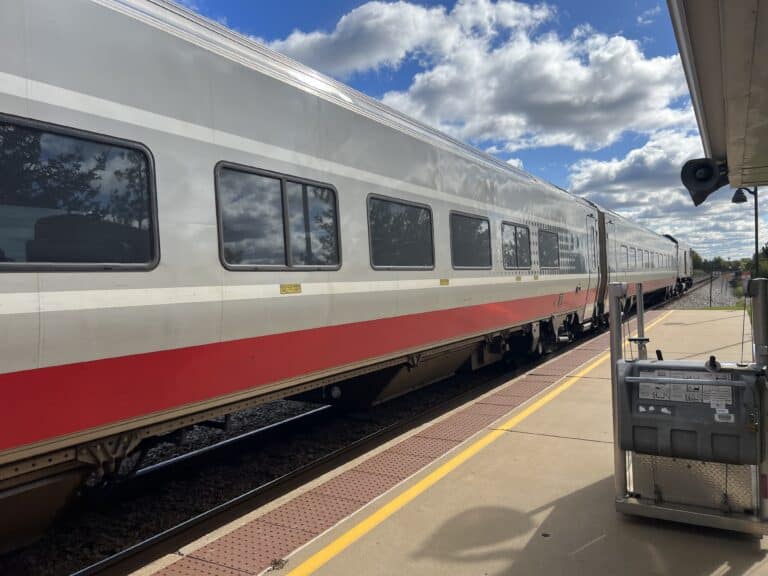
Check for signs with boarding instructions for unstaffed stations, but be aware that none may be present. Especially if there is just one track for boarding.
If there is only one platform at the station, things are more straightforward: wait behind the yellow line for the train to come. If there are two, check for signs.
A few unstaffed stations have announcements, such as Sturtevant Depot, which has two tracks.
At this station, conductors or other Amtrak staff can remotely inform passengers that the train is coming, which train track it is on, or make other announcements.
Whatever the case, prepare your belongings and tickets when you see the headlights, as the train will arrive soon.
At flag stops, the train only stops if you purchase a ticket before the train’s arrival.
As the train pulls up
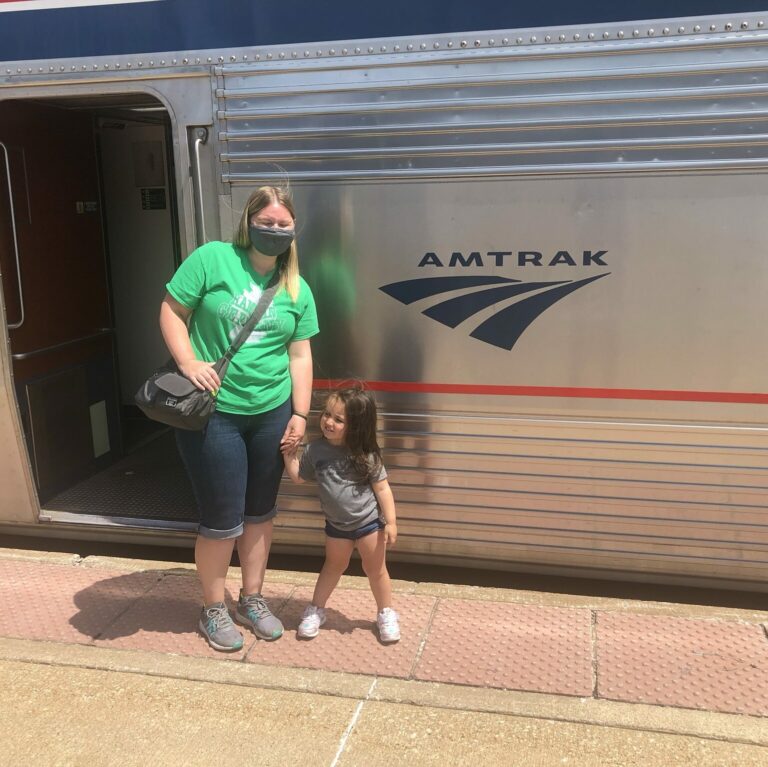
Ensure you are in the right spot before the train arrives and are visible to the crew; sometimes, two trains arrive at or close to the same time.
You want to board the one going in the right direction. Also, have your bags and ticket handy to speed things up!
To speed up the process, it helps to watch the train for your accommodations as it rolls in, so you can head toward where you need to go when it stops.
Once the train stops, the conductors and attendants will open the doors and step off the train; however, be aware that not all doors will open. If you are trying to exit the train, do not open any doors; instead, find an open door.
Depending on the train, you may be assigned a seat before boarding and told to go to a specific car based on your destination. When they ask, tell them the stop where you get off that train, not your final stop, if you are transferring. This information is on your ticket.
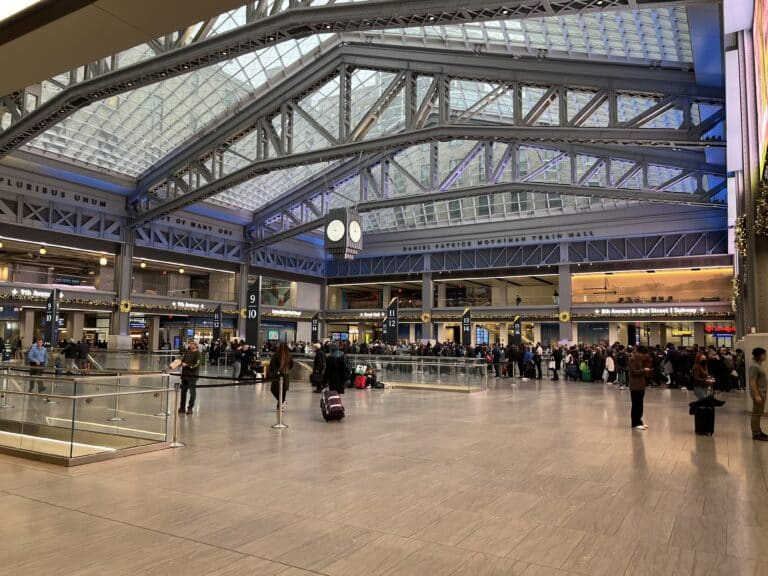
Boarding an Amtrak train at a staffed station
Where You Can Wait For Your Train
If you’re traveling in coach class, look for designated waiting areas. If you’re a sleeper passenger or in first class on an Acela train, check for a lounge specifically for those passengers. You’ll wait in the shared waiting area if a lounge is unavailable.
Occasionally, you can purchase a day pass for the lounge, even if you hold a coach or business class reservation.
Some stations, mainly the larger ones, have food service areas or convenience stores where you can get something. Most staffed stations offer baggage storage for a fee, often $10 for 24 hours.
Red Cap or other assistance services are available at many stations to help passengers who need assistance to or from their train. These services could include a wheeled chair or a cart.
Verification & Checking Your Bags
Some smaller-staffed stations prefer to verify that you are at the station at the correct time for the train and on the specified travel date. I mainly experienced that in Omaha.
Reminder: If you wish to check bags, Amtrak requires you to do so 45 minutes before your scheduled departure time.
Some stations may overlook this rule; it is best to assume they do not. Remember that both stations need to offer a checked bag service.
As the train pulls up
When your train arrives, ensure you can hear the announcements or that at least one person from your travel party can, so you know when to prepare and where to go. If you are at an originating stop, like Chicago, they can call you earlier than expected.
When it’s time to board the train, the staff will help you find the right spot on the platform or inform you of the correct platform to use. While walking to the train, ensure your ticket is ready to be scanned.
Finally, it was time to board an Amtrak train.
The train is here, and it’s time to board —or is it? It is!
Before I enter this section, I want to emphasize the importance of listening to the staff’s words to understand the process.
I often see people not following instructions, which slows down the boarding process.
The key points to listen for from station staff are the train’s number, gate, and track information. Additionally, listen to instructions on the position of your accommodations.
Long-Distance Train Coach Class
Meet the train at the station staff’s designated location, and look for the conductors and staff who will direct you to the correct car. Coach passengers on long-distance trains often receive a seat check or tag, which indicates their assigned seat.
Long-Distance Trains Sleeping Accommodation
If you have sleeper accommodation, you will be assigned a car and room after completing your reservation. Please check your tickets. There is no need to cut in line or push and shove. No one will take your room.
While boarding, I have experienced people rushing because they don’t want someone to take their assigned room. (Eye roll) Take your time and be kind to others.
Walk to the car that matches your reservation; the car number is four digits and displayed on the door.
The car attendant will often meet you at the door unless you are boarding late at night, when a conductor may help you.
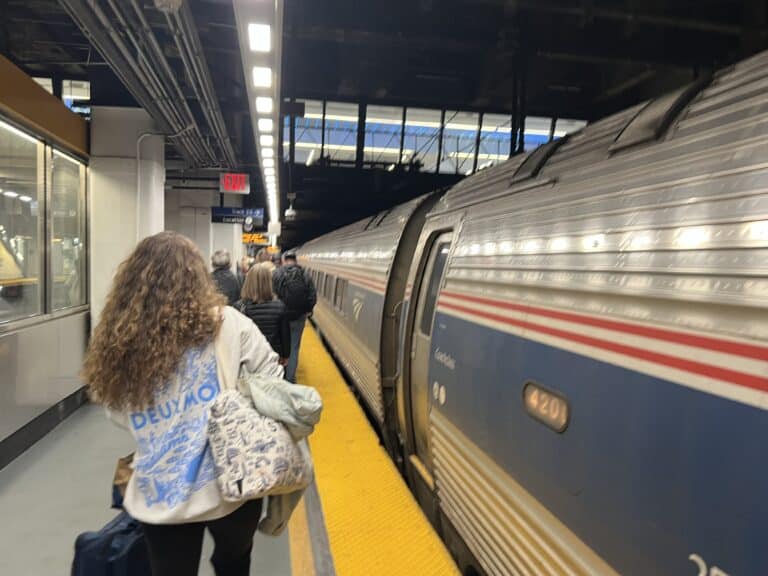
Regional Trains
Some regional trains have open seating, meaning you can enter through any door and sit anywhere. Occasionally, conductors will assign you a car; sometimes, due to short platforms, not all doors will open.
If you are a business class passenger, look for that car or ask a conductor for assistance. Often, business class is near the cafe car.
Acela
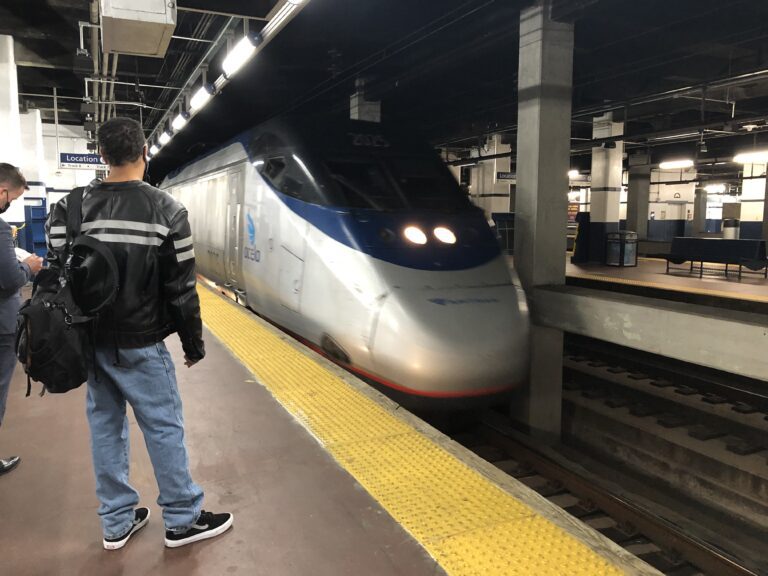
On Acela trains, when you book, you are assigned a car and a seat that you can change for free.
As you walk up, look for your car number, enter, and find your spot. Please don’t ignore your assigned seat because you don’t like it or think it is unimportant. Another passenger may have picked where they wanted to work or to sit with a fellow traveler; this has happened to me.
When boarding an Amtrak train, do I need to present my ticket to the conductor?
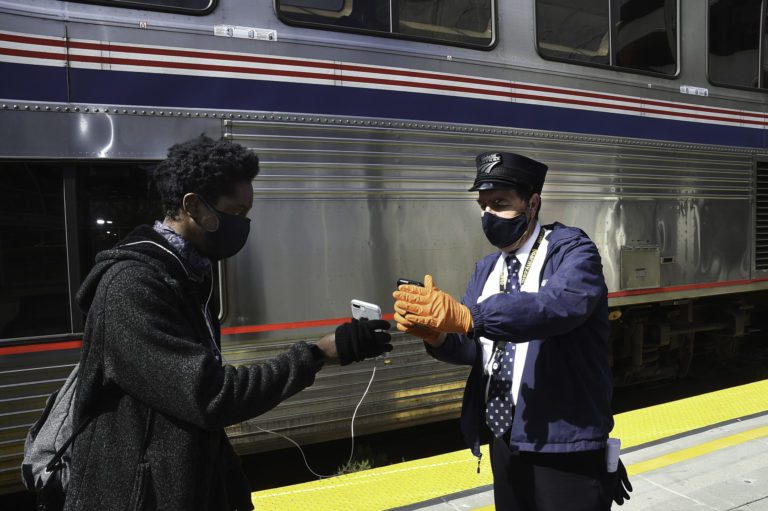
Conductors use an iPhone-type device with a scanner to scan your bar or QR code. Depending on the number of segments, the same barcode could be scanned several times during your trip.
Depending on how many people are boarding, the conductors may scan your tickets before or as you board, or they may wait till you board the train and are seated.
There have been times when I was the only one boarding the train, and the conductor would look at me and ask, “Kevin?” I said, “Yeah,” and he hit the button, and that was that.
If you are a sleeper car passenger, the conductor may consult with your car attendant and manually lift your ticket, meaning it may not be scanned.
Keep Travels with Kev on Track!
🚂 Hop On Board—It’s Free!
Join my free newsletter and get your hands on the Quick Reference Guide to Amtrak Long-Distance Trains—your go-to resource for train equipment details, dining options, and more.
You’ll also receive insider travel tips, Amtrak updates, and exclusive content—delivered straight to your inbox.
💌 Help Keep Travels with Kev on Track!
If you’ve found my tips helpful, consider supporting my work on Patreon. For just $ 5 per month, you’ll receive a limited-edition postcard featuring photos from my travels. Or, check out my Support Page for other ways to contribute—whether through a wish list item or a one-time donation, every bit helps keep the journey rolling.
🎉 Special Offer:
Now through June 30, get 48% off your first month on Patreon with code 605BD!
🌐 Stay Connected:
You’ll find links to all my social media below—follow along so you never miss a tip, update, or train tale.
👉 Don’t miss the ride—join the adventure today!
Boarding an Amtrak train wrap-up
Following these few steps will make boarding an Amtrak train easier:
- Be ready
- Pack light
- Ensure your luggage is in good condition.
- Plastic shopping bags and garbage bags are not great for luggage and are not approved for use.
- Research the stations you use to know what to expect.
- Have your tickets ready, either on paper or electronically, to expedite the boarding process.
- Listen to announcements, whether at a staffed station or an unstaffed station with a public address (PA) system.
- Keep an eye on the train’s status.
- Don’t push and shove; the train will leave after all passengers are onboard.
Boarding an Amtrak train is not complicated when you know what’s happening and are prepared to go.
Thanks for stopping by, and I hope you found what you were looking for when boarding an Amtrak train.
Please check out my other article about riding Amtrak. If you found value in this information and would like to help ensure the site’s continued operation, please consider supporting us here.
Safe Travels!
Kev
Love Train Travel?
🚆 Love Train Travel? Stay Connected in Two Easy Ways!
📱 Follow Me on Social Media – Get real-time updates, travel tips, and stories from the rails.
✉️ Join My Free Newsletter – Be the first to know about Amtrak news, insider tips, and exciting travel opportunities.
When you sign up for the newsletter, you’ll also receive a free Quick Reference Guide to Amtrak Long-Distance Trains—packed with details on train equipment, dining options, and more.
➡️ Sign up today and start planning smarter, smoother train adventures!
❤️ Want to support my work? Every bit of help keeps Travels with Kev rolling—check out my Support Page or join me on Patreon!

